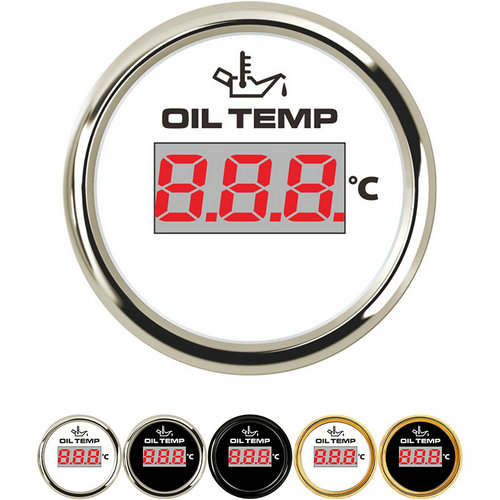aftermarket oil cooler temp gauge
The engine coolant temperature gauge is used to indicate the temperature of the engine coolant. The coolant temperature signal is provided by the engine coolant temperature sensor installed on the engine cylinder head. When the engine works normally, the displayed value shall be 80 ~ 100 ℃. When the engine coolant temperature reaches 97 ℃, the cold printing fan runs at low speed; when the engine coolant temperature is lower than 94 ℃, the cooling fan stops running; When the engine coolant temperature is higher than 105 ℃, the cooling fan runs at high speed; when the engine coolant temperature is lower than 101 ℃, the cooling fan stops running at high speed; When the engine coolant temperature reaches 89 ℃, the thermostat is partially opened; when the engine coolant temperature reaches 101 ℃, the thermostat is fully opened. If the coolant level of the engine reaches or exceeds 112 ℃, the coolant temperature warning lamp will be on. At this time, stop the engine immediately and turn off the engine. Check the coolant level and cooling pipeline.
How normal is the coolant temperature? After turning on the ignition switch, the pointer of the normal coolant temperature gauge should deflect from 100 ℃ to 40 ℃, and then gradually indicate the correct coolant temperature.When the ignition switch is turned on, other instruments on the instrument panel are normal. If the coolant temperature gauge does not move, there may be two situations:
First, the coolant temperature gauge is damaged;
Second, the coolant temperature gauge is normal, but the coolant temperature sensor is damaged.
Use a tool to short circuit the terminal of the coolant temperature sensor and the components. If the pointer of the coolant temperature gauge swings from 100 ℃ to 40 ℃, it means that the coolant temperature gauge is normal and the coolant temperature sensor is faulty.If the coolant temperature still does not move, it indicates that the coolant temperature gauge is faulty.When the ignition switch is turned on, the pointer of the coolant temperature gauge quickly moves from the position of 100 ℃ to the position of 40 ℃. However, after the engine temperature rises, the pointer still stays at the position of 40 ℃. At this time, the wire of the coolant temperature sensor can be removed. If the pointer quickly returns from the position of 40 ℃ to the position of 100 ℃, it indicates that there is a ground short circuit inside the coolant temperature sensor:
If the pointer still stays at 40 ℃, it means that the connecting wire of the coolant temperature gauge sensor is grounded.If there is a fault inside the sensor or a short circuit between the wiring and the engine block during diagnosis, turn off the ignition switch immediately to avoid burning out the coolant thermometer. In addition, the coolant temperature gauge can also be tested by the universal tester for automobile electrical appliances and other equipment.
 English
English 



Get a Quote / Info